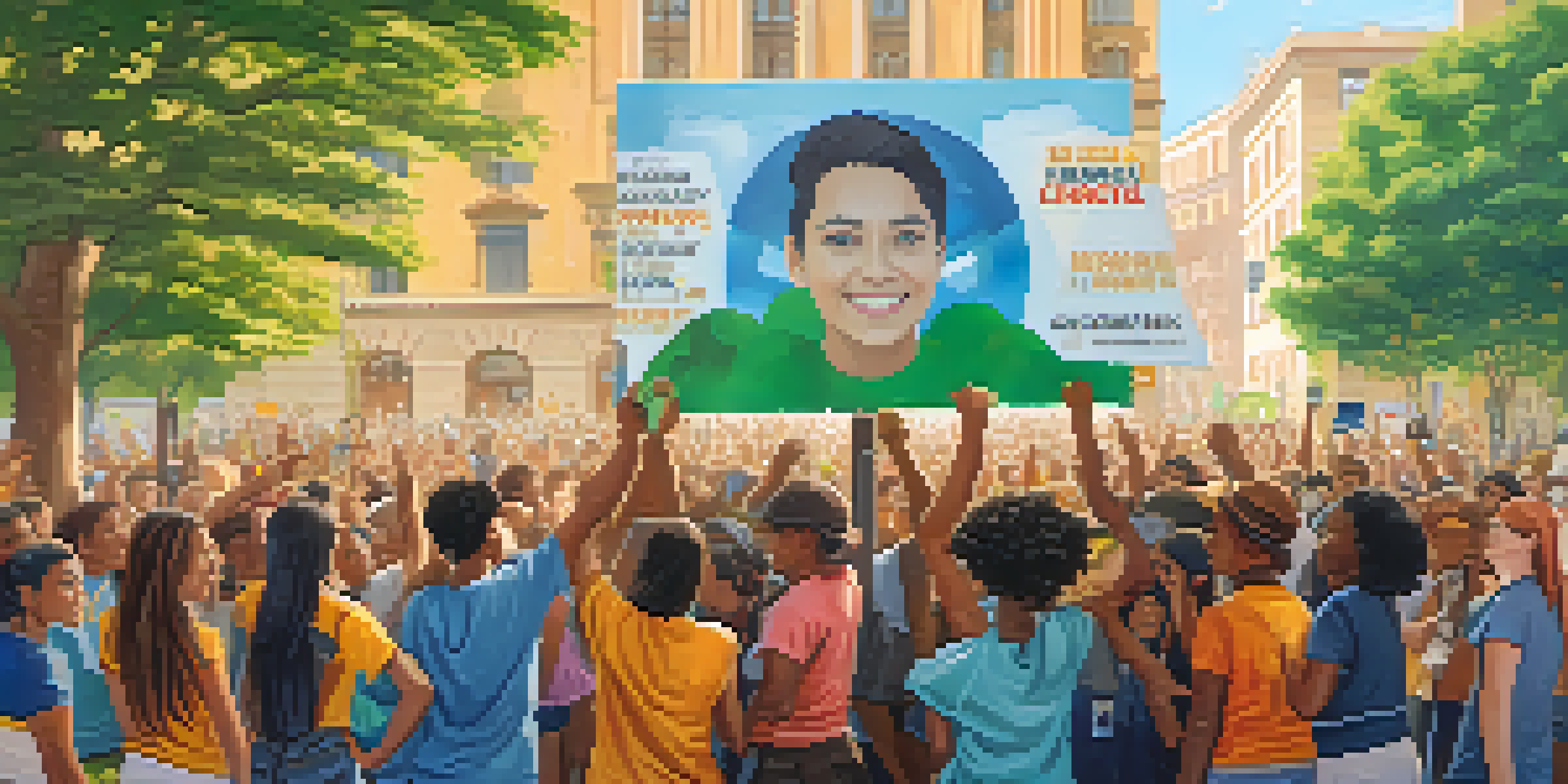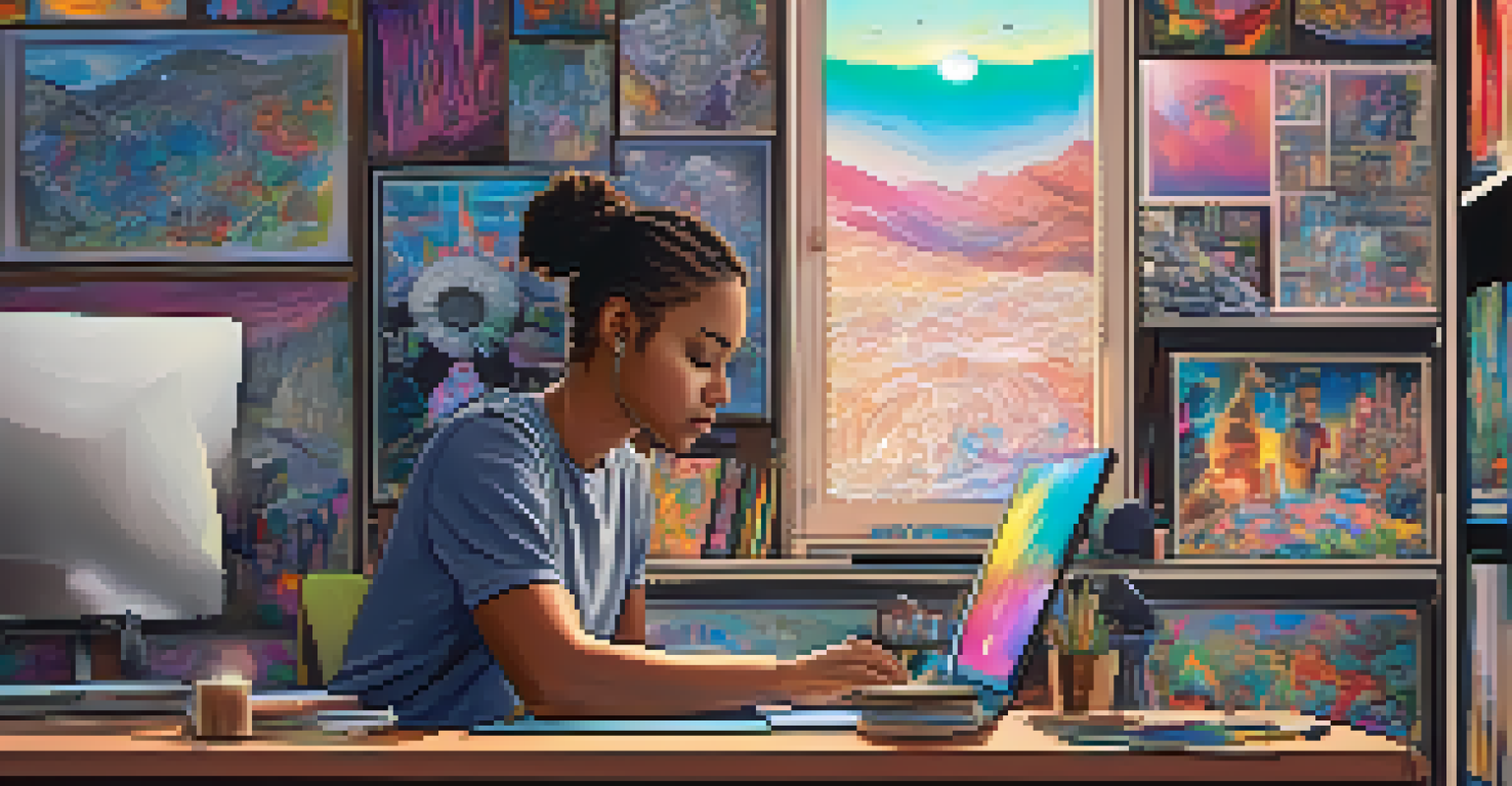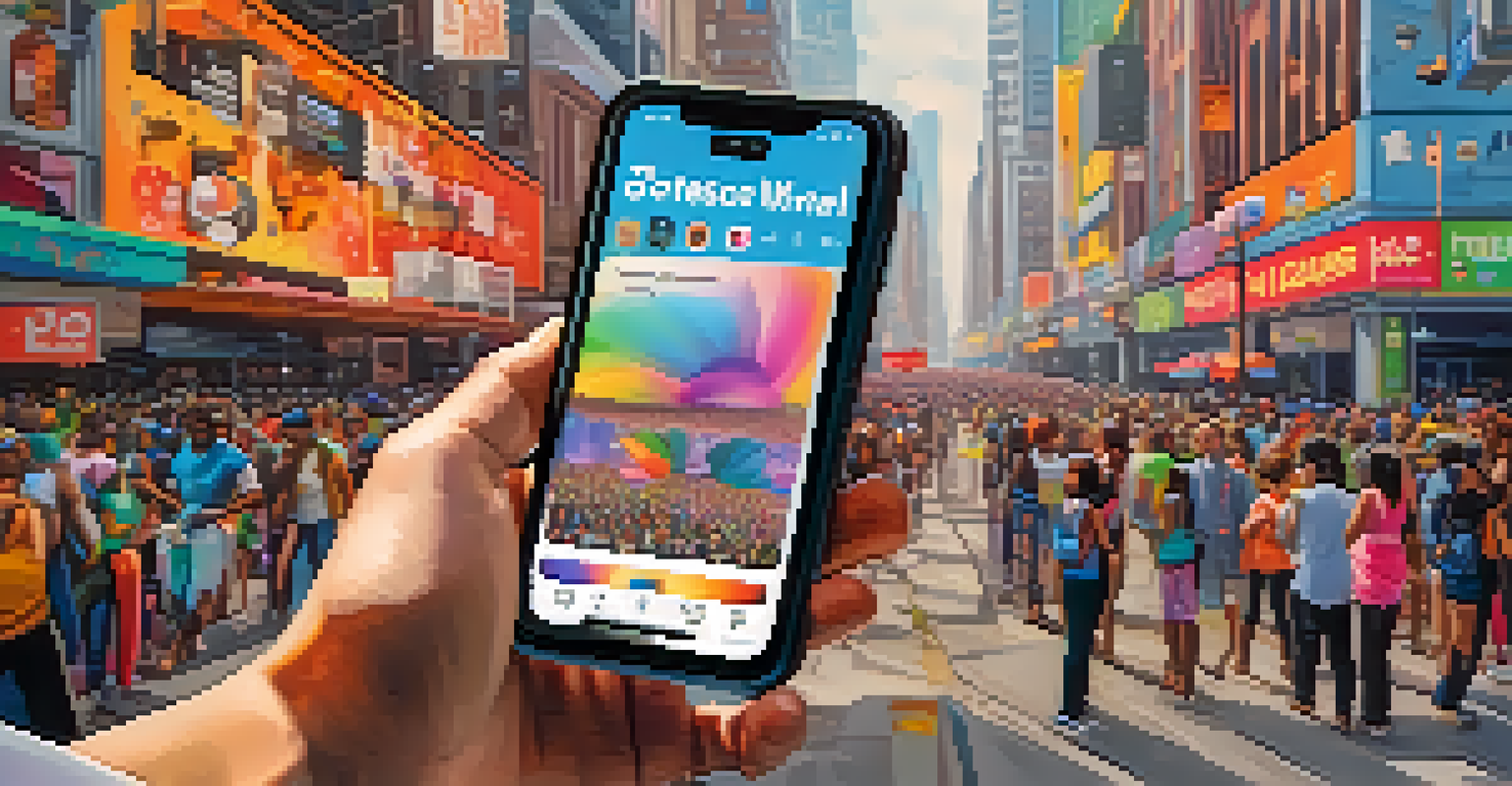The Influence of Digital Art on Youth Activism Movements

Understanding Digital Art in Today’s Context
Digital art refers to artistic works created using digital technology, which has become increasingly popular among youth. This form of art allows for creativity to flourish, providing a platform for self-expression and critical thought. As young people navigate complex social issues, digital art serves as a powerful medium to communicate their messages and ideas effectively.
Art is not freedom from discipline, but disciplined freedom.
In today’s digital age, platforms like social media have made it easier for young artists to share their work with a global audience. This accessibility encourages collaboration and innovation, allowing for the rapid exchange of ideas and perspectives. Moreover, the interactive nature of digital art can engage viewers in a unique way, inviting them to participate in discussions surrounding important issues.
By merging technology with creativity, digital art not only captivates attention but also raises awareness about various causes. This influence is particularly pronounced in youth activism movements, where art becomes a rallying point for collective action. It’s fascinating to see how a simple image or video can ignite conversations and inspire change.
The Role of Social Media in Amplifying Voices
Social media platforms like Instagram, TikTok, and Twitter have become the modern-day canvases for youth activists. They provide a space where digital art can thrive and reach millions in an instant, amplifying the voices of young people. This immediacy is crucial in a world where attention spans are short and messages need to resonate quickly.

Through hashtags and viral trends, digital art can spread awareness about social issues ranging from climate change to racial injustice. For instance, artworks depicting these themes can go viral, prompting discussions and even mobilizing protests. This potential for widespread reach transforms individual expressions of art into significant movements.
Digital Art Fuels Activism
Digital art serves as a powerful medium for youth to express their ideas and advocate for social change.
Moreover, social media allows artists to connect with like-minded individuals and organizations, fostering a sense of community. This online solidarity can translate into real-world actions, creating a powerful synergy between digital art and activism. As a result, many youth feel empowered to take part in causes that matter to them, knowing they are part of a larger movement.
Visual Storytelling: A Tool for Change
One of the most compelling aspects of digital art is its ability to tell stories visually. This form of storytelling can convey complex emotions and concepts in a way that words sometimes cannot. For youth activism, visual narratives can highlight injustices and inspire empathy, making the issues more relatable to a broader audience.
The artist's job is to be a witness to his time in history.
Through powerful imagery, young artists can illustrate their experiences and the realities of their communities. This not only raises awareness but also humanizes the issues, allowing others to see the world through their eyes. For example, a poignant illustration about climate change can evoke feelings of urgency and responsibility, prompting viewers to take action.
Additionally, visual storytelling can serve as a historical record of movements, documenting the evolution of youth activism. As digital art captures the essence of social struggles, it contributes to a collective memory that can inspire future generations. This legacy reinforces the idea that art is not just for aesthetics; it's a catalyst for social change.
The Intersection of Art and Activism
The blend of art and activism is not a new concept, but digital advancements have transformed how this intersection operates. Digital artists often utilize their skills to comment on societal issues, creating works that resonate with current events. This melding of creativity and advocacy helps to break down barriers, making activism more appealing and accessible to young people.
Art has long been a medium of protest, and in the digital realm, that tradition continues with renewed vigor. For example, during the Black Lives Matter movement, countless digital artworks emerged, fueling conversations and mobilizing support. These creations not only expressed solidarity but also educated viewers on systemic issues surrounding racial inequality.
Social Media Amplifies Messages
Platforms like Instagram and TikTok enable young artists to share their work widely, turning individual expressions into collective movements.
By integrating activism into their art, young creators challenge societal norms and inspire others to join the fight for change. This dynamic relationship encourages a culture of activism that values creativity as much as it values strategy. In essence, digital art becomes a rallying cry, inviting everyone to participate in the pursuit of justice.
Challenges Faced by Digital Artists in Activism
Despite the many advantages of using digital art for activism, artists often face significant challenges. One major issue is the potential for censorship, especially when addressing controversial topics. Platforms may remove content deemed inappropriate, which can stifle important conversations and limit the reach of crucial messages.
Additionally, the fast-paced nature of social media can lead to the commodification of art, where important messages are diluted for the sake of virality. This pressure can discourage artists from tackling deeper issues and instead push them toward creating more 'shareable' content. Striking a balance between impactful storytelling and engaging visuals can be a daunting task.
Moreover, young activists may struggle with mental health issues stemming from the weight of the topics they address. The emotional toll of constant exposure to social injustices can lead to burnout and disillusionment. It’s essential for the community to support these artists, ensuring they have the resources and encouragement needed to continue their vital work.
Success Stories of Digital Art in Activism
Throughout recent history, we’ve seen numerous success stories where digital art has played a pivotal role in activism. One notable example is the use of digital illustrations during the March for Our Lives movement, which advocated for gun reform. Artists created compelling visuals that not only captured attention but also helped convey the urgency of the cause.
Another inspiring case is the impact of digital campaigns during the climate strikes led by youth activists like Greta Thunberg. Artistic visuals and memes flooded social media, rallying support and encouraging students worldwide to participate. These efforts showcased how digital art can mobilize a generation, uniting them under a common purpose.
Visual Storytelling Inspires Action
Through impactful imagery, digital art conveys complex issues and emotions, fostering empathy and prompting viewers to engage in activism.
These success stories highlight the potential of digital art to create tangible change. By leveraging creativity, young activists have proven that art can transcend traditional forms of protest, making movements more accessible and engaging. As we continue to witness these inspiring examples, it becomes clear that digital art is an invaluable tool in the fight for social justice.
The Future of Digital Art and Youth Activism
Looking ahead, the relationship between digital art and youth activism is poised for continued growth and evolution. As technology advances, new tools will emerge that allow artists to express their ideas in even more innovative ways. This could lead to entirely new forms of activism that blend art, technology, and social change.
Furthermore, as younger generations become more engaged in global issues, we can expect digital art to play an increasingly central role in activism. The ability to share art instantly and connect with others across the globe will amplify messages and foster collaboration on an unprecedented scale. This interconnectedness can empower youth to take ownership of their narratives and advocate for the changes they wish to see.

Ultimately, the future of digital art in activism is bright, with the potential to inspire countless individuals to engage in social justice efforts. As young people continue to harness their creativity to address pressing issues, the impact of their work will likely resonate for years to come. It’s an exciting time to witness how digital art can shape not only movements but also the very fabric of our society.